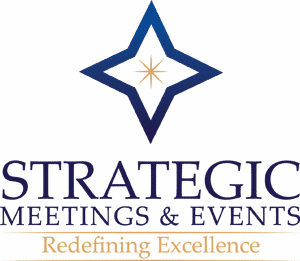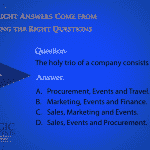The first step in the planning process is?


What if I told you that the most important meeting you could ever have, one your entire career hinges upon, is one you have not only never had, but one you may not even know exists? Not only that, but this meeting is the linchpin in the strategic plan that will completely reinvent and redefine the event profession.
Most events are legacy events, meaning they happen each year (think sales meetings and incentive trips). When the appropriate date arrives, we hold a meeting to discuss theme, budget, marketing, assign tasks, and get to work. If that’s the way you’re planning, you are making a HUGE mistake.
The result usually looks like this: as the planning progresses, we often struggle to get face time with key executives, watch deadlines we set pass, with little regard from those ignoring them, and have plans changed without our input. The result is wasted time, resources, and money. As the event draws closer, our workdays expand later into the night and further into weekends. Simultaneously, our frustration mounts as it appears as if no one respects our skills, or takes our work seriously. It’s kind of a miserable experience.
If we are going to survive as an industry, there needs to be a committed effort to learn how to plan events that truly drive business and deliver results. To do that, means being strategic in everything we do and making all our actions goal-centric. Nothing happens until a clear goal is articulated, defined, confirmed, and committed to. Those who embody this strategic philosophy will earn the title of, ‘strategic planner’ or ‘event strategist.’ Meeting or event planner titles will be extinct, but we’ll get to that down the road.
 There is a system to this, that while simple, is not easy. If we approach the planning process from this strategic perspective, everything changes. We start the planning process two months earlier than is customary with a discovery session. This is the single most important meeting you will have for the entire life cycle of the planning process.
There is a system to this, that while simple, is not easy. If we approach the planning process from this strategic perspective, everything changes. We start the planning process two months earlier than is customary with a discovery session. This is the single most important meeting you will have for the entire life cycle of the planning process.
A discovery session is designed to establish the meetings’ goal. In order to do that attendees must:
- Articulate what each stakeholder thinks the goal of the meeting is.
- Define terms. This means establishing clear metrics for success, spend, attendance; whatever the variables are that connect with the goal and how it should be measured.
- Come to a unanimous consensus as a group on the goal and the metrics.
- Commit to both the goal and the metrics and agree that this plan is now set in stone or cannot be changed without the entire group present and agreeing to the change.
- Reiterate that in your role as a professional strategist, you are going to carry out the plan and are an integral part of the achievement of all stated goals.
Only key stakeholders should be invited. To define ‘stakeholder’ think in terms of whose budget underwrites the event or where the blame lands if it tanks. Discovery sessions are not brainstorming sessions or kickoffs. Their sole purpose is to get a consensus on a goal and how it will be measured. Without this critical, first step, we are destined to plan in an environment of frustration, confusion, indecision, and waste.
Discovery sessions uncover a myriad of challenges that have always existed but have never been properly exposed and diagnosed. For instance, the group may not have the same goal in mind or the metrics are not easily agreed upon. This is why decisions are made and changed, deadlines missed, and money and time squandered. This is also why planners are not seen as an integral part of an organization. This one meeting creates a clear vision, gives the meeting a precise target to hit, and establishes the strategic planner as the key to a successful execution.
If you just had an ‘a-ha’ moment, please keep an eye out for my next column. If you can’t see a distinction between the two options, you may be part of the problem which means you need this info even more.
If you are ready to bring a strategic vision to your organization, here are three things you can do:
- Pay attention to your work environment. Are you reacting to changes or are you carrying out a clear plan? Noticing a challenge is the first step toward fixing it.
- Identify key stakeholders for the meetings you are planning. It may take some time to sort out those who have opinions from those who are paying and are ultimately responsible for the meeting’s success.
- Get your team to start thinking strategically; everyone needs to know not just what they are doing, but why. What’s the end goal? That drives focus.
There is much to be done, but we are just the people to tackle the challenge. And we have so much to gain. Let’s keep the conversation going. Email me with your feedback, questions, ideas, and names of people who should be featured in future columns at: Christy.Lamagna@Strategic.Events, follow me: @SMEChristy. And please share this article. We need to start our own discussion about a goal and metrics as an industry.
Here’s to our strategic success!





